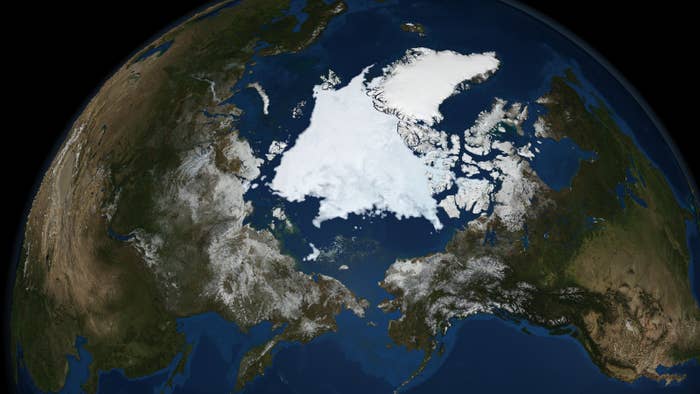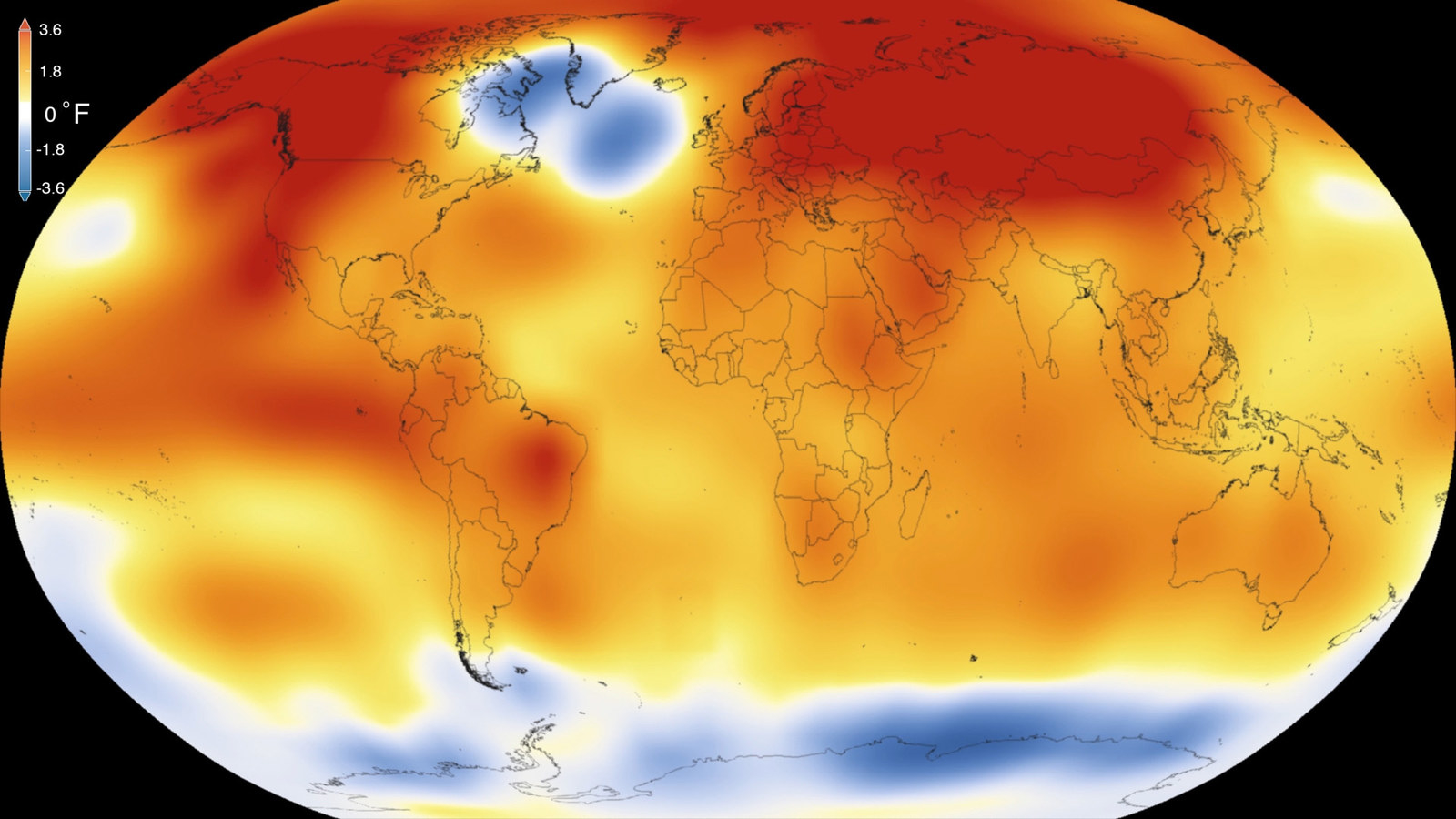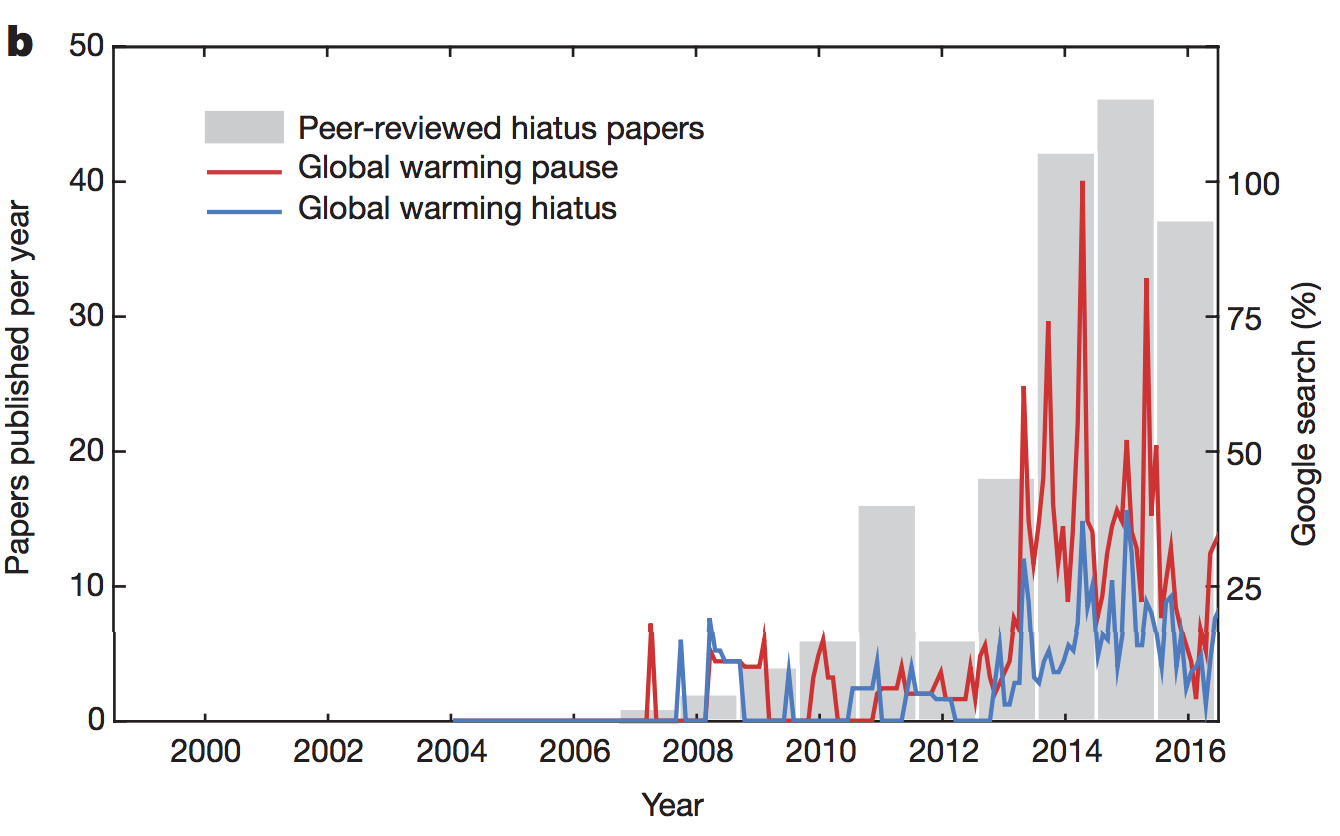If you've been paying attention to climate science stories in the press over the last few years, you'll have seen confusing headlines about the global warming "hiatus".

That's a roughly 15-year period, usually given as starting in 1998 and ending about 2012, in which the world – specifically, average temperatures at ground level – apparently warmed less than was expected. It's been hugely controversial, and the headlines have often been mutually contradictory. Some have said that there was "no hiatus", others that the hiatus has "been explained".
It's gone on for a while, and it's provided ammunition for climate sceptics and deniers: Senator Ted Cruz, the climate-sceptical Republican from Texas, said in 2015 that there had been "no warming" for 17 years.
A study published in Nature today has tried to explain where that confusion comes from.
Basically, the problem has been that people haven't been talking about the same thing.

There have been three different definitions of "hiatus" used since the issue came to public attention in 2012, and depending on which one you use – and how you select the data to support it – you can make it look as though there was, or wasn't, a pause.
"There are three definitions," Dr Iselin Medhaug of the Institute for Atmospheric and Climate Science at ETH Zurich, one of the authors of the study, told BuzzFeed News.
The first definition was what you might expect from the word "hiatus" – either no detectable warming, or a period of cooling. That was the definition used when the "hiatus" first gained attention, around 2012.
The second definition was that there was warming between 1998 and 2012, but that it was slower than the average rate of warming for the previous few years. And the third definition was that there was warming, but that it was slower than that predicted by computer models.
And that's meant that whether or not there was a hiatus depends on which definition you choose, and how you select your data.

Obviously, if you define a "hiatus" as meaning "slower-than-normal warming", you'll find it easier to detect one than if you define it as "no warming at all". And that's not the only source of confusion – when you start looking matters too.
"If you start your period in 1998, that was a very warm El Niño year," said Medhaug. "So it’s easier to get negative warming, or more flattening out, than if you start in a cool year like 2009."
And, crucially, there are different datasets – a NASA one and one from the British-run HadCRUT – which make different assumptions and give slightly different results.
So asking whether or not there's been a hiatus is sort of pointless. Scientists BuzzFeed spoke to all agreed that only one question is really worth asking: Have the computer models predicted what we've seen? The answer is "pretty much".

"The only definition that's defensible is the model-observation mismatch," Dr Karsten Haustein, a climate scientist at the University of Oxford who was not involved in the study, told BuzzFeed News. Dr Ed Hawkins, an associate professor of climate science at the University of Reading who also was not involved in the study, agreed: "For me, it’s always been about the comparison of the models with the observations."
For a while there were a few questions that weren't answered. There's much more data available now than there was even 10 years ago, and that allows scientists to explain a lot of things that weren't clear back then. "The models we have of the climate are a few years old," said Medhaug, "and when we ran them we didn't know what the sun would do or what volcanoes would do."
As it turned out, the sun went through a period of cooling, and several small volcanoes pumped dust into the atmosphere that kept the sun's heat out. The models didn't take that into account, and also lacked data from the Arctic. "Now we understand a lot better about that missing data," said Hawkins. "Once you account for it, the discrepancy between the models and the observations disappears."
Since the Arctic and other data was included, several studies have found that, even between 1998 and 2012, warming continued.
It's worth noting, also, that the hiatus has only ever been about one thing – global surface temperatures. That's only a part of the story.
The air stores only a small amount of the Earth's energy – in fact, according to the Nature paper, a 3.5-metre-deep layer of the world's oceans contains as much heat as the entire atmosphere. And whether or not that's getting warmer, satellite data shows that, in total, there is more energy coming to the Earth from the sun than there is leaving back into space.
Most of it is apparently going into the deep oceans, said Medhaug. "When the temperature in the water rises, the water expands," she said. "So even if you can't measure the temperature, you can see the sea level rise," and extrapolate deep-water heating like that.
So whether there's been a hiatus is kind of irrelevant. The point is the climate models work pretty well and we should still broadly trust them. But the hiatus controversy has been a bit of a communications disaster.

The graph above shows how many scientific papers discussing the "global warming hiatus" or "global warming pause" were published by the end of last year – a total of 178, with interest suddenly spiking in 2013. According to the new Nature paper, scientific interest appears to have been sparked by media interest.
"This paper makes it clear how this hiatus came into the public discussion," said Haustein. "Some blogs raised it. But why have scientists picked it up? My point of view is there shouldn't have been all these papers about it. I find it annoying that we need this [Nature] paper."
He said it was obvious to scientists that there would be periods of slower warming, just because of natural variability such as the El Niño/La Niña system in the Pacific. But that wasn't communicated well to the public, so when the "hiatus" gained attention, people thought that it was a blow to the whole climate change edifice. "People will always come back to it and say, 'You didn't predict that,'" he said. "It's going to haunt us in future."
Hawkins agrees. "I certainly worry that this has confused people," he said. "I think it's not been very good communication. We always understood there was natural variability as well as a long-term trend. But it was mostly missing from the public and media discussion.
"It hadn't been communicated in advance, so we were playing catch-up."
And, of course, whether there was or wasn't a hiatus, it's definitely over now.
The last three years were the hottest three since records began. If you want to say there was a hiatus, that's fine, but normal service has been resumed.
